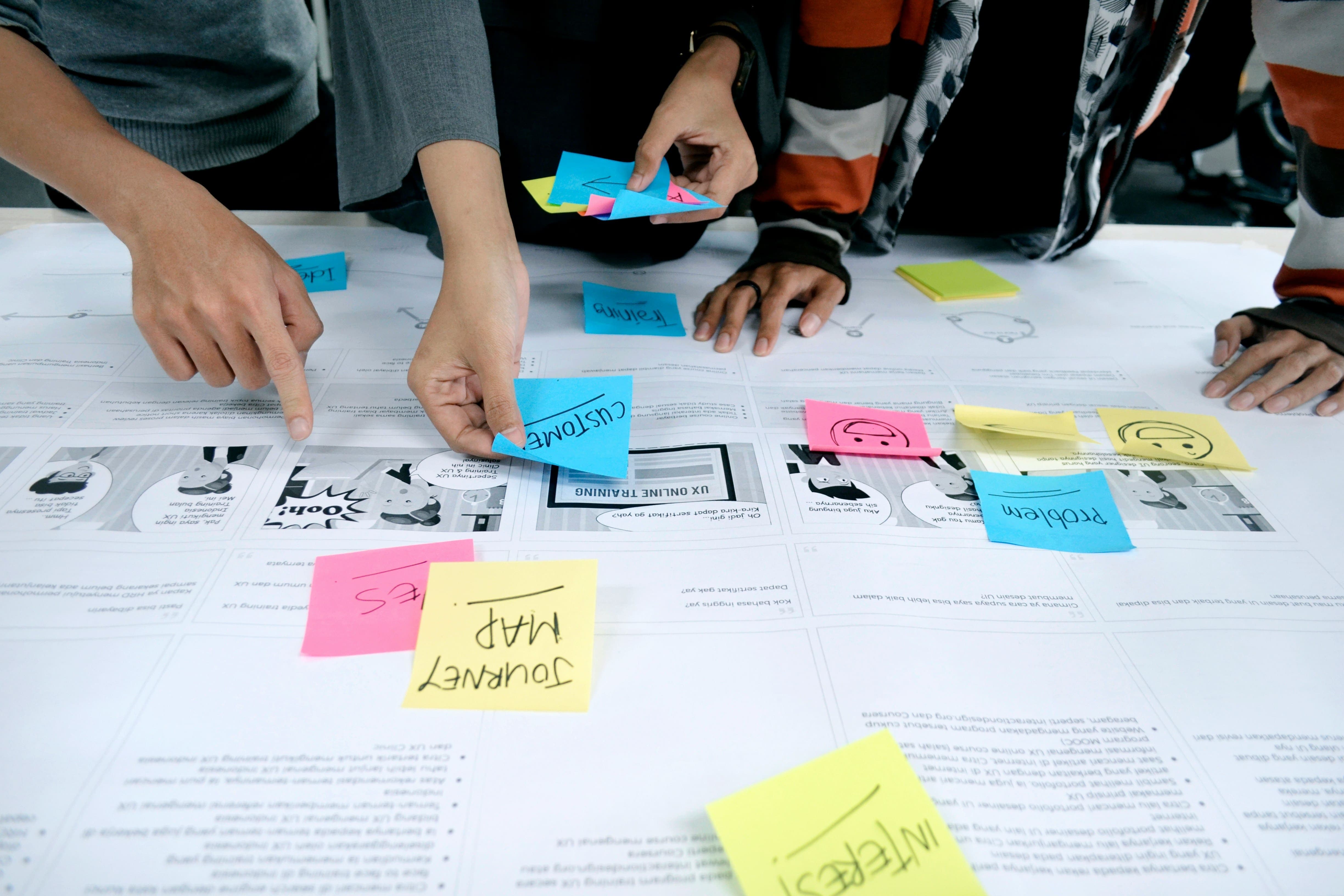Navigate back to Articles page

Writing in digital systems is kind when it is helpful, inclusive, and conversational.
You can try some activities to help make your writing more kind.
Kind writing is helpful
Stress cases
We should stop using the term “edge case.” This is a way to dismiss a group of users. Similarly, do not blame users, even if it is their fault. Blaming doesn’t help them meet their goals.
Instead of using the term “edge cases,” use “stress cases.” This emphasizes emotion. Consider the user’s emotional state and their emotional journey while using the digital product. Consider how the words they encounter in your digital product impact their life outside of that experience.
We should help users get things done despite the stress they already have in their lives. Hopefully the interaction they have in our digital products won’t increase that stress.
Errors
Errors will happen. Anticipate them. Then you can try to handle them gracefully by: Avoiding them, explaining them, and resolving them.
Here are some ways to avoid errors from happening:
- Provide instructions explaining what to expect or how to operate something.
- List and constrain the available options, so it is not open-ended. Use check boxes or radio buttons.
- Place any requirements of an input field before the input field. Don’t place it after it or wait until the form is submitted.
For example, if the instructions “password must include a symbol” is placed after the password field, then the user may not see the requirement until after they tried to enter a password. If it is placed before it, the user has a greater chance of success on the first try.
New password: abc123
Password must include a symbol
Some errors can’t be avoided. When this happens:
- Display a clear and concise message.
- Reassure users concerning loss of time or data if possible.
- Link to pages that contain more information which may help users understand what’s happening.
After explaining an error, then if possible list the options they have to move forward. Help them make progress toward reaching their goal.
For example, the “page not found” error is common. Don’t display only “404.” Don’t blame the user for landing on a page that doesn’t exist. Instead, be personal, be direct, and help them move forward.
We couldn’t find the article you’re looking for.
Try to search for the article or explore articles by category.
Kind writing is inclusive
The words we use should make people feel included and welcome. But as the book Writing is Designing (2020) states:
If the language you use tells a potential user that you didn’t think about their experience when building this thing, they’re not going to use it.
The Conscious Style Guide offers articles and resources that covers many aspects of inclusive practices, such as:
- Ability, disability
- Age
- Appearance
- Ethnicity, race, nationality
- Gender, sex, sexuality
- Health
- Socioeconomic status
- Spirituality, religion, atheism
For this article, I will focus on just two aspects: How we can be considerate of the choices people make regarding their technology and identity.
Technology
Content stacks vertically on mobile devices and content is read linearly when announced by a screen reader. As such, prefer chronological words like “beginning” or “before” over spatial words like “top” and “left.”
| Spatial | Chronological |
|---|---|
| Top | Beginning |
| Bottom | End |
| Left | Before |
| Right | After |
In general, do not use words that describe what the user should do with their device, such as:
- Click a mouse
- Tap the screen
- Press a button
- See the printout
Instead, use words that describe the action the user wants to do with the interface, such as:
- Choose an option
- Select text
- Use search
- View more details
Don’t tie a tool or product to a role. Instead, describe how a tool or product can benefit the user when trying to accomplish a task. This wording change invites everyone to participate, regardless of their experience.
| Don’t say | Say |
|---|---|
| Saws are for carpenters. | Saws help you to shape wood. |
Identity
The word “they” is a neutral way to talk about a person because it doesn’t imply a gender. So, rather than writing something clunky like “she/he” or “(s)he,” just say “they.”
Don’t assign value (especially negative value) to things that describe a person. Just state the facts in a neutral way.
| Don’t say | Say |
|---|---|
| (S)He will be in touch. | They will be in touch. |
| wheelchair-bound | wheelchair user |
| suffers from autism | has autism |
Respect how people identity themselves. For example, the book Writing is Designing talked about an accomplished national athlete named Nina. She said:
I hope that I’m inspiring because I worked really hard to be a good [basketball] player. Not because I use a wheelchair.
Kind writing is conversational
Writing that is conversational is context-aware, is polite, and has personality.
Context-aware
Writing that is context-aware is sensitive to circumstances, such as time of day, location of the user, and any preferences the user has set.
For example, a person’s phone may be aware that they are going to a movie theater this evening, according to their calendar. Before leaving, the phone asks if silent mode should be turned on once they arrive, in order to avoid disturbing others during the movie.
Phone notification: Would you like to automatically turn on Silent Mode when you arrive at the movie theater?
In contrast, a system can cause emotional distress if it does not tailor messaging for the situation.
For example, an event platform that assumes that all events are a joyous occasion is insensitive to situations like a memorial arranged for friends and family of someone who recently died.
Email: Exciting news! You have been invited to “Celebrating the life of Jack.” RSVP now!
Polite
Writing that is polite respects the user’s time and anticipates needs.
For example, a prompt from a utility service could encourage the user to set up auto bill payment.
Utility service: Would you like to set up auto-payment? We will email you a week before the monthly bill is due, so you have time to contact us about it before you are charged.
Writing that is not polite wastes time, imposes, or is rude.
For example, a person is reading an article when an unprompted popup appears. Its close button is tiny and hard to see.
Popup: Spin this wheel to win!
Person: I’m just trying to read this article! I can’t find the close button!
Personality
Writing can also have personality. This is often spoken of in the terms “voice and tone.”
- Voice: What is said (information)
- Tone: How it is said (emotion)
The particular style of tone depends on the audience, the context, and the values the organization is conveying. Some tones will be used more than others. Not all tones will be used. Here are some example styles:
- Encouraging
- Friendly
- Informational
- Reassuring
- Supportive
- Sympathetic
- Trustworthy
Different tone styles will direct the word and phrase choices you make and the structure of the sentences you write. A little goes a long way, so don’t overdo it. Keep it simple.
Here are samples of how tone is reflected in a message:
| Tone style | Sample |
|---|---|
| Informational | Item deleted |
| Reassuring | You can restore deleted items from the trash bin for the next 30 days. |
| Trustworthy | We keep your data encrypted and secure. We can’t see it. We won’t sell it. It is yours forever. |
Activities for kind writing
This activity explores how a conversation could respond to non-ideal situations. Despite the problems, can the participants overcome and still meet their goals? How could the participants feel after this conversation? What are the outcomes of this conversation for the individuals or others?
We don’t know the fullness of what a person experiences before, during, and after they use the digital products we design. We should aim for stress-free interactions, extend grace, and be kind to our users.
Instructions
- Take a situation or conversation from the activities for useful writing as a starting point.
- Rewrite, role play, or discuss that conversation so that one of these things occurs:
- One participant (or “the system”) encounters a problem. That problem does (or doesn’t) get resolved.
- One participant is not polite to the other.
- One participant is (or is not) aware of some contextual information that would improve the conversation (such as time, place, physical or mental impairment, or emotional state).
- One participant continually interrupts the other.
- One participant is not being truthful (on purpose or on accident).
- One participant is not being cooperative.
- One participant is not being quick and clear.
- Contemplate one of the participant’s emotional journey during and after the conversation. (Use an emotion classification system for additional assistance.) For example, at different times they could feel:
- Interested or indifferent
- Desired or disgusted
- Assumed or alarmed
- Excited or anxious
- Thankful or angry
- Elated or sorrowful
- Patient or frustrated
- Contentment or disappointment
- Discuss how this emotional journey could affect their short-term or long-term view on the other participant in the conversation (or the digital product). How could this emotional journey affect their (or someone else’s) day or future?
- Reflect on how the participants speak. Does that tone represent the values of the organization?
Example: Pizza order
Situation:
- Customer wants dinner to be delivered for their family of four.
- Pizza rep wants orders to be efficient and friendly.
- Pizza rep is unaware they’re out of pineapple at the time of the order.
A few minutes after the initial order, the pizza rep calls the customer:
- Pizza rep: Hi, this is Pizza Planet, calling about the order you placed a few minutes ago. It turns out we are out of pineapple. Would you like to substitute that for another topping?
- Customer: Oh. Okay. That’s a bit odd. Uhm. Maybe green pepper?
- Pizza rep: Good choice. And yes, I can confirm we have green pepper. We apologize for this frustration and delay in your order. We will make delivery free today, and we will provide you with a coupon for free delivery on a future order. You can expect your pizza in about 20 minutes.
- Customer: That sounds great. Thank you for your help.
- Pizza rep: Thank you for choosing Pizza Planet!
Customer’s emotional journey:
- Confused: The customer is initially confused by the phone call.
- Disappointed: The delay and extra time on the phone is disappointing.
- Satisfied: The free delivery and coupon seems like fair compensation.
- Pleasantly surprised: The customer is pleasantly surprised that the pizza rep called to resolve the issue. Otherwise, the customer may have paid for a topping they never got.
- Hopeful: The customer is likely to order from Pizza Planet again, because they treated them well.
- Hopeful: The customer is likely to recommend Pizza Planet to others because the situation was more positive than negative (and ended positively).
- Trust: The free delivery coupon will remind the customer of this problem-turned-positive experience the next time they order.









